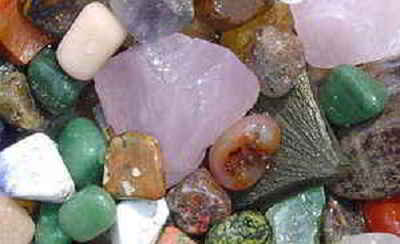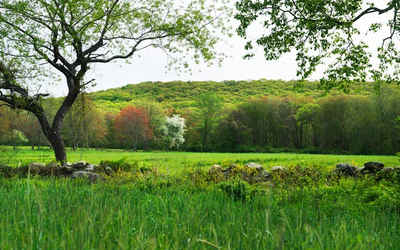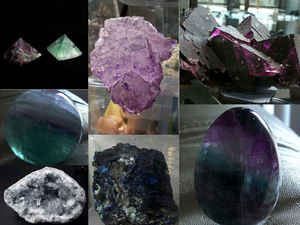Rhode Island State Mineral
Bowenite

(Serpentine Mineral)
Adopted in 1966.
Bowenite was officially established as the state mineral in 1966 by Resolution No. 268. This is the same year and resolution number that designated the state rock as Cumberlandite.
Bowenite, a serpentine mineral, a close relation of Jade and can be considered a semi-precious stone. It is found in the Northern part of Rhode Island in association with Limestone and is found in different colors; light yellow, canary yellow, light and dark green, gray and blue. It was discovered in the early 1800's by a Rhode Island geologist, George Bowen, and named in his honor.
Rhode Island State Mineral: Bowenite

Serpentinite is a low grade metamorphic rock, formed from the hydration and oxidation of ultramafic rocks (primarily peridotite). The resulting minerals (including serpentine, brucite and/or magnetite) have a much lower density, resulting in large structural changes and the destruction of the original mineral forms.
The most-common variety of serpentine in the gem trade is bowenite, the hardest of the serpentine minerals. It is a massive variety of antigorite that ranges from blue-green to green and green to yellow. It is translucent to semi-translucent, and has been used in various types of jewelry, as well as in decorative and ornamental applications.
A variety of chrysotile serpentine that is massive shaped and composed of densely packed colorless fibers and is a serpentine mineral relative of jade, aka Nephrite and Rhode Island jade. It does not have the same hardness or density as jadeite or nephrite. Bowenite jade can be scratched with a carbon steel knife, but the latter can not. A little bit of mineral oil or oil from your forehead can easily make the scratch invisible again.
It was first called Nephrite by by Mead in 1822. Mead described it as almost impossible to break with a hardness of 6. It has a waxy lustre sometimes translucent appearance and ranges from opaque to translucent and is known collectively as a noble or precious serpentine. Since it's a hydrous silicate of magnesium with little or no aluminum it is not a sodium-aluminum silicate as real jade or jadeite. Bowenite takes an excellent polish if tumbled and is a valuable mineral for lapidarists.
Bowenite can be found in many different areas of Northern Rhode Island. There is some question as to the exact locality of the first discovery. It is mentioned in old mineralogical text books about the Smithfield township occurrence which might be the Dexter Lime Quarry and is now considered the Lincoln township. In other areas, Bowenite can be found where metamorphic limestone is quarried to make limestone commerically for use on lawns, gardens, driveways and for building material. Most notably the Harris and Conklin Lime Quarries.
Bowenite was named after the famous Rhode Island geologist George T. Bowen, who discovered and analyzed it in the year 1822. Therefore it was named Bowenite in his honor. Bowenite is a very close relative of Jade and is considered a semi-precious stone. It is found in association with dolomitic limestone and is a serpentine stone. It comes in a array of different colors which include; light yellow, canary yellow, yellowish-green, light and dark green or apple green, brown, blue, blue-green, gray to almost white. It occurs in elongated lenses or veins a fraction of an inch to several inches thick, or in masses (nodules) 3 to 4 inches in diameter in the more dolomitic of the precambrain marbles.
METAPHYSICALLY

Known as the stone of fidelity and the dream stone. 4th chakra. Deep heart healing stone, use for all issues of the heart. Also used to stimulate meditation. Use if you wish to open the Kundalini. Can be used in the treatment of diabetes and hypoglycemia. This stone was said to be one used in the breastplate of the high priest. Astrological Signs of Aries, Gemini, Taurus , & Libra . Vibrates to the master number 11. SERPENTINE : Astrological Sign of Gemini . Vibrates to the number 8.
Rhode Island Law
Bowenite was officially established as the state mineral in 1966 by Resolution No. 268. This is the same year and resolution number that designated the state rock as Cumberlandite.
(Officially established by Resolution No. 268, 1966).
Minerals, & Gems

Gemstone, Minerals, Rocks







